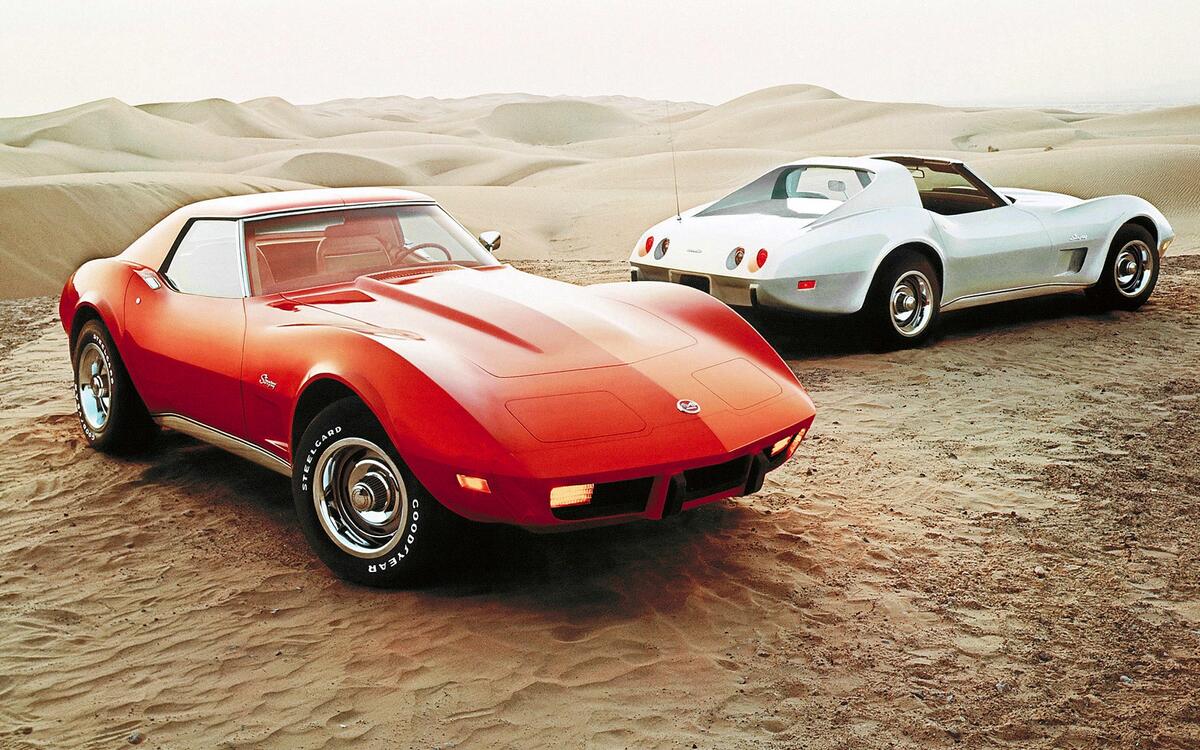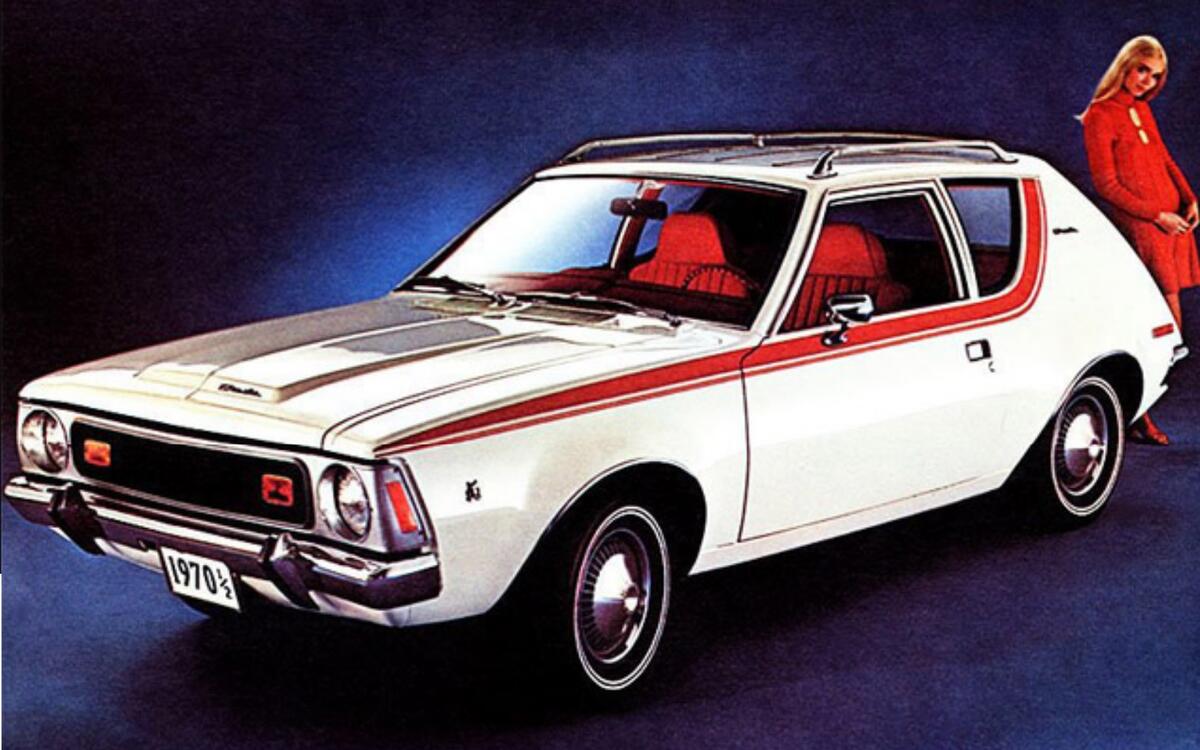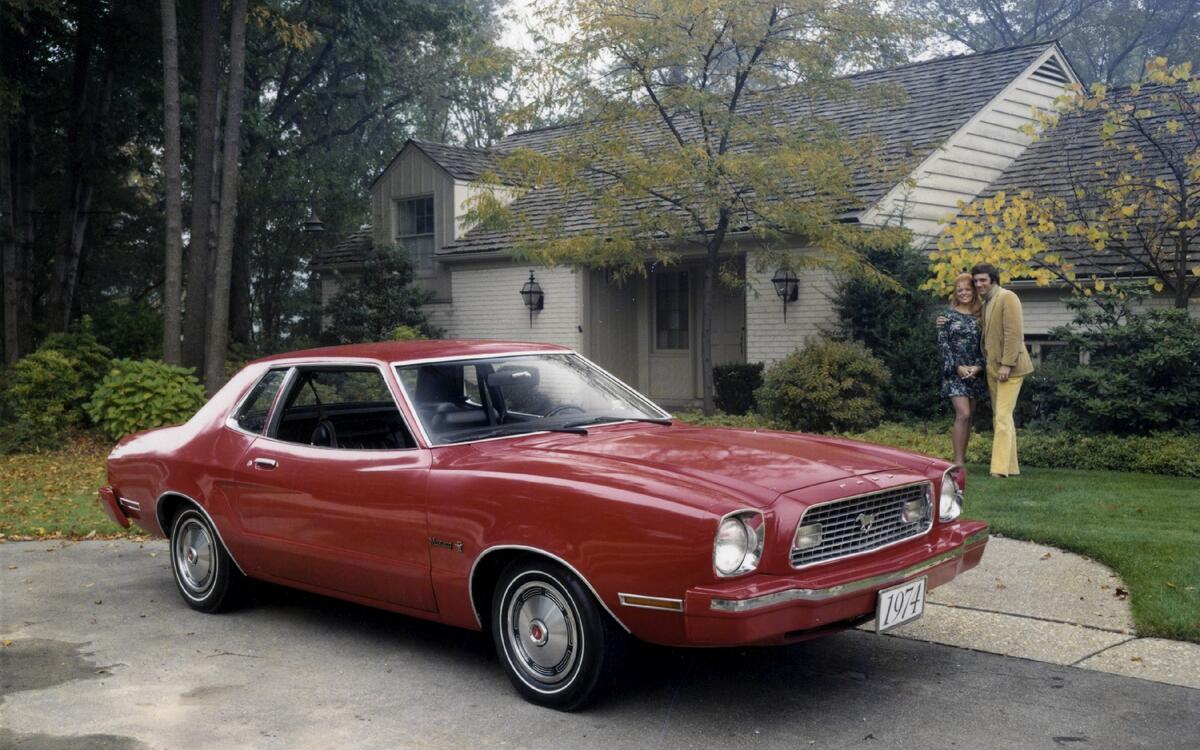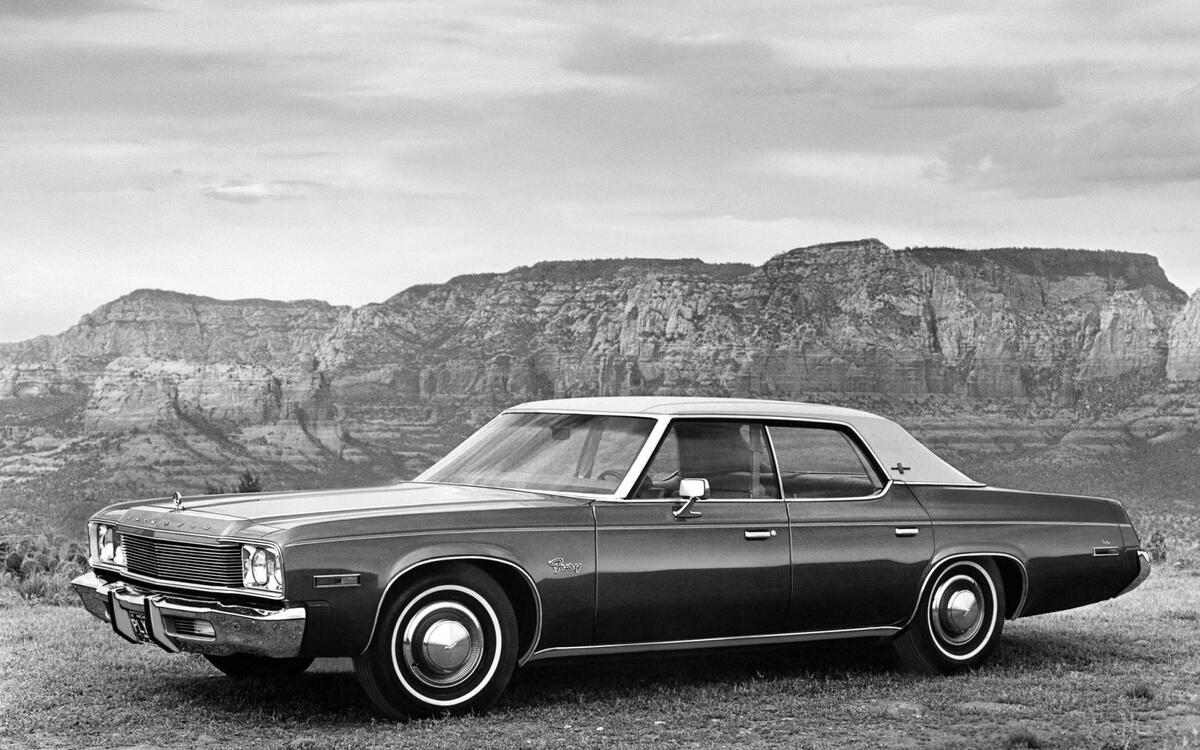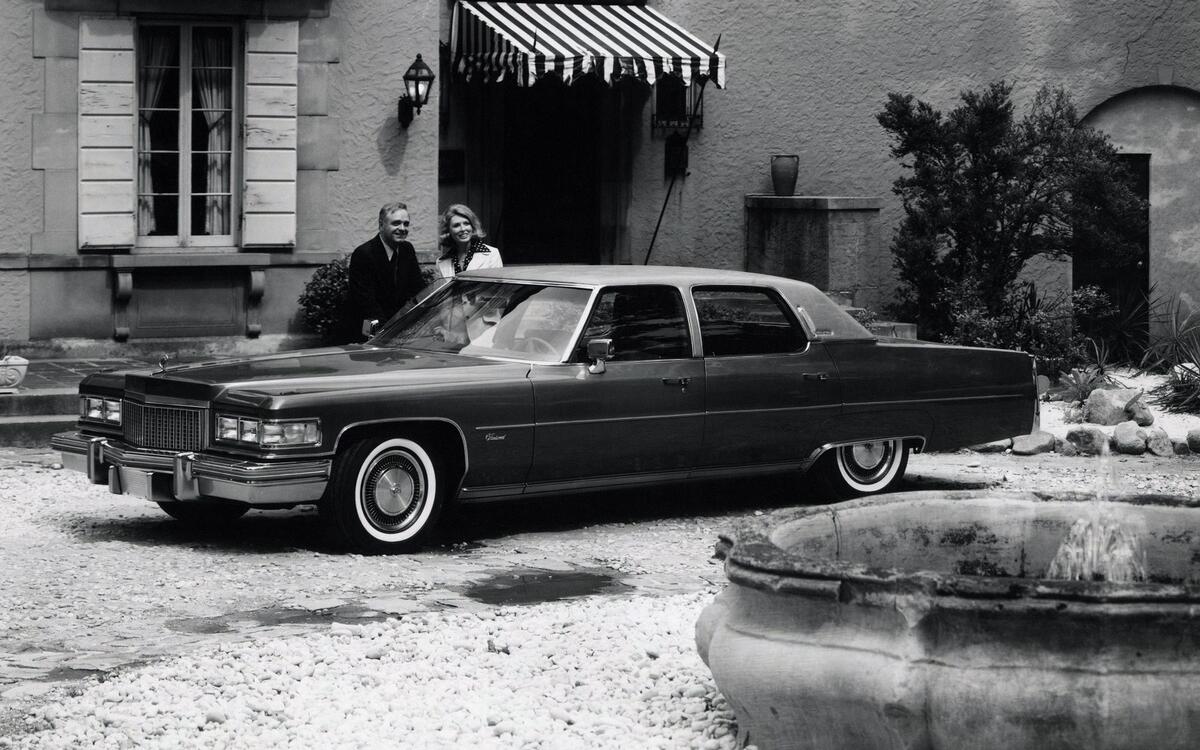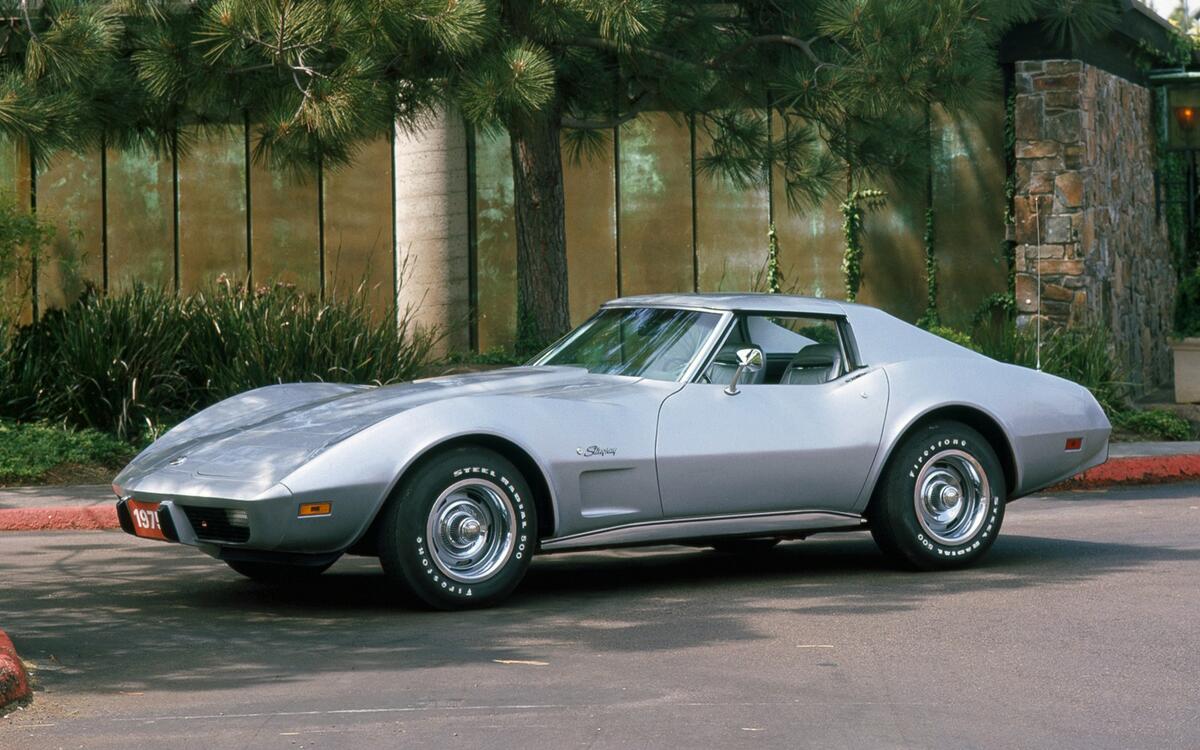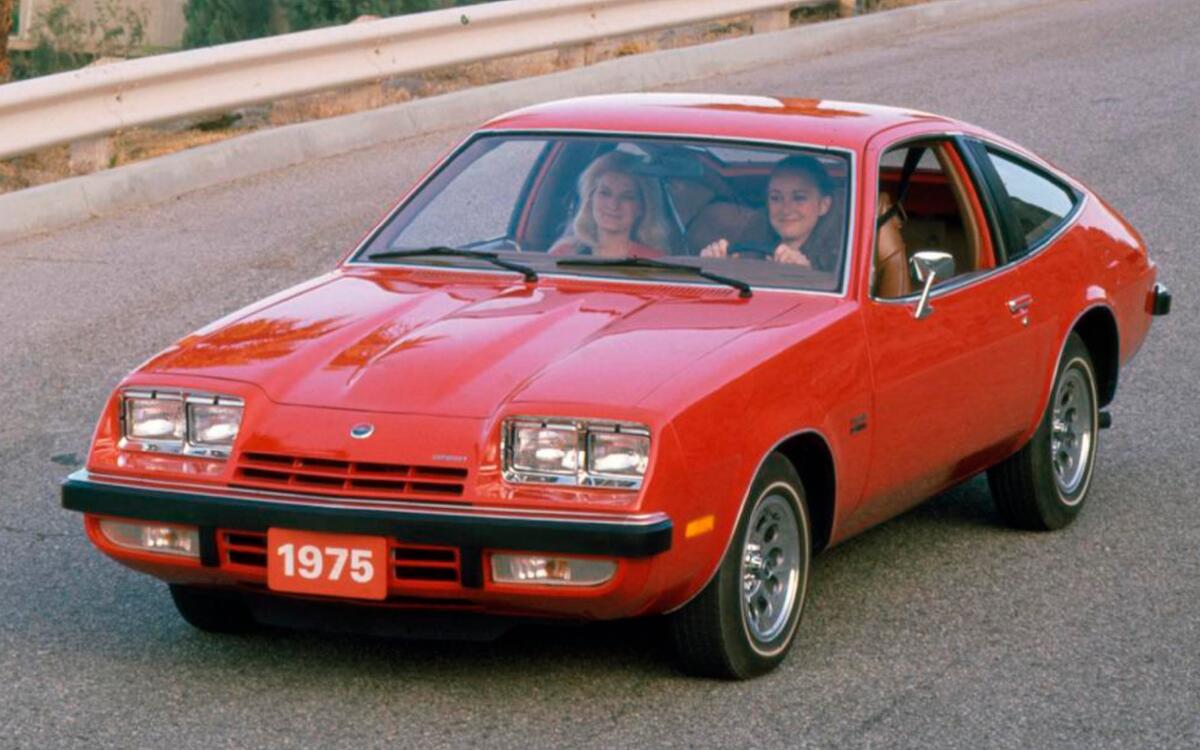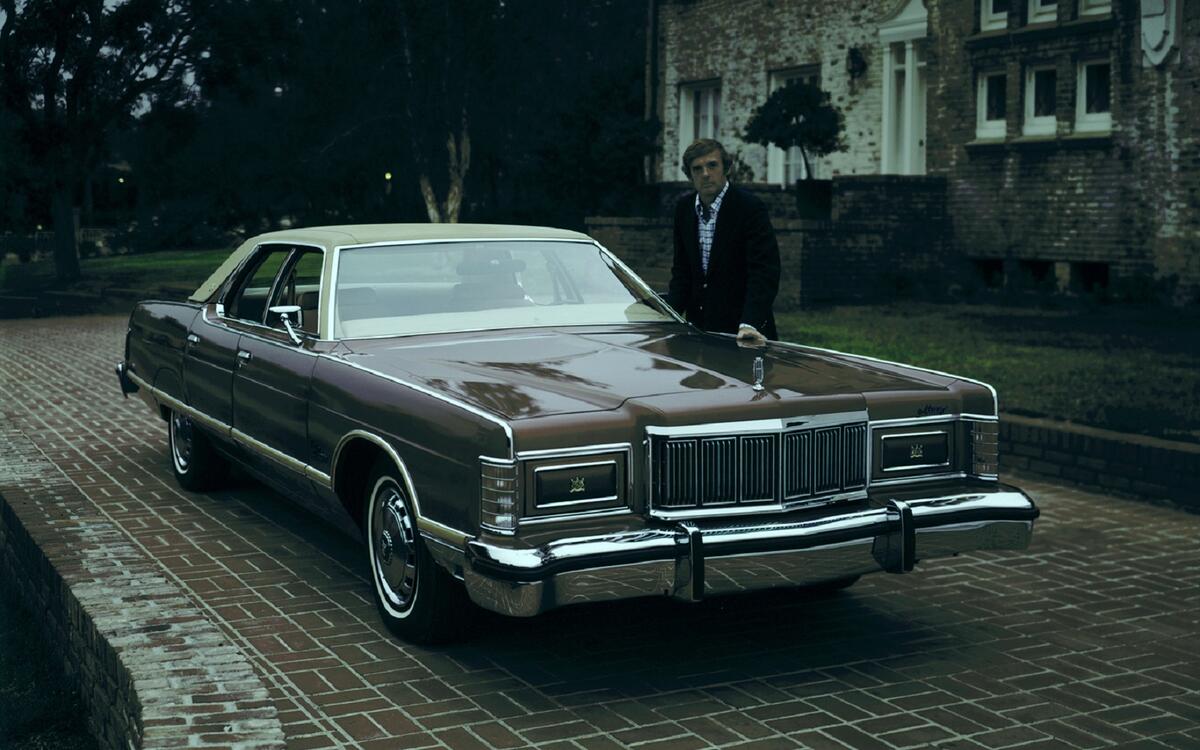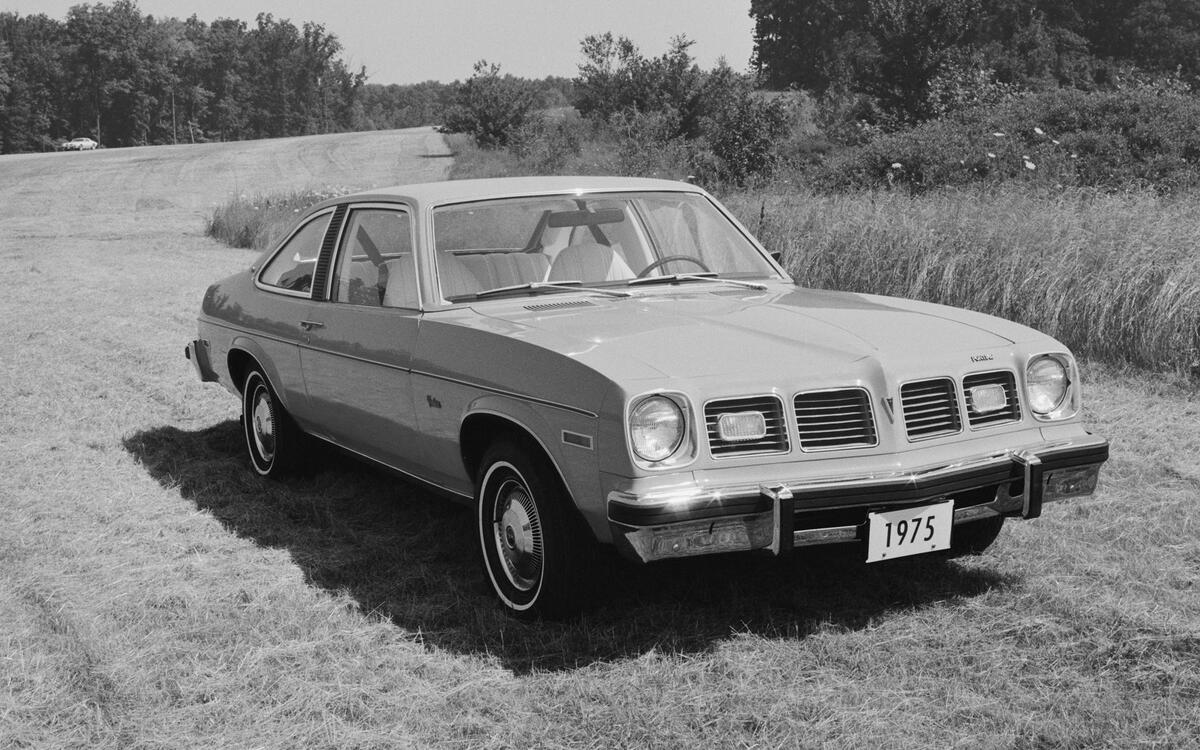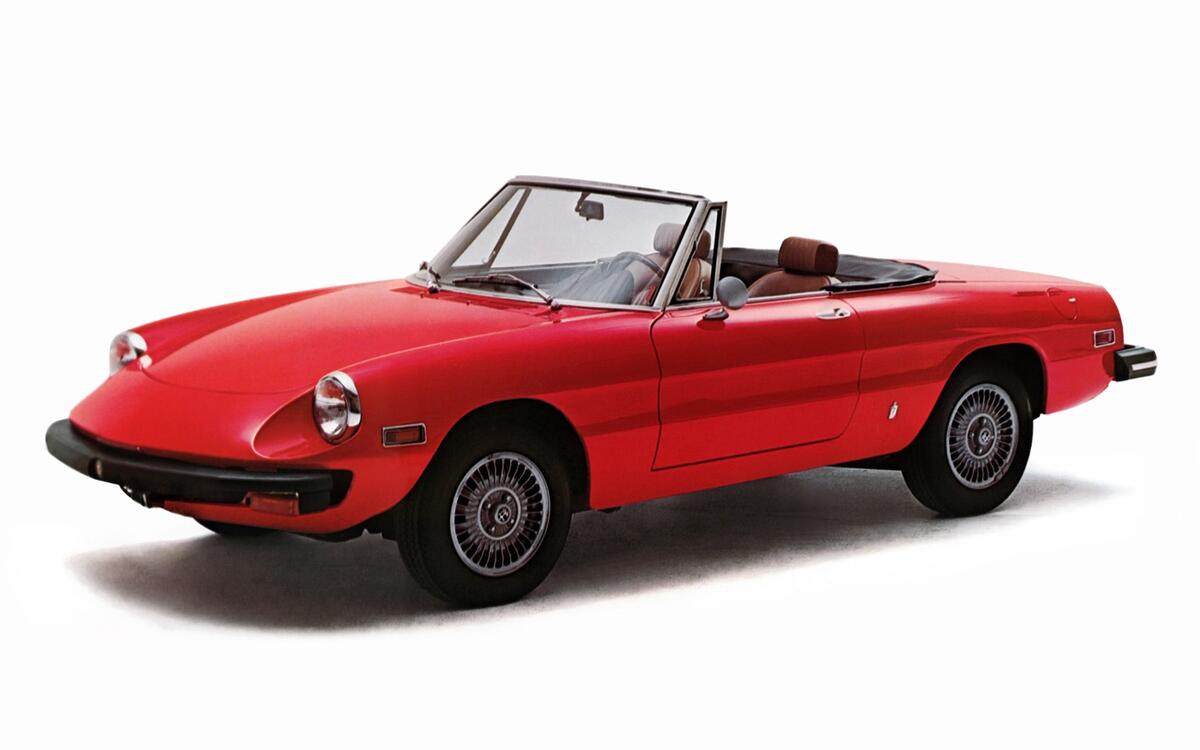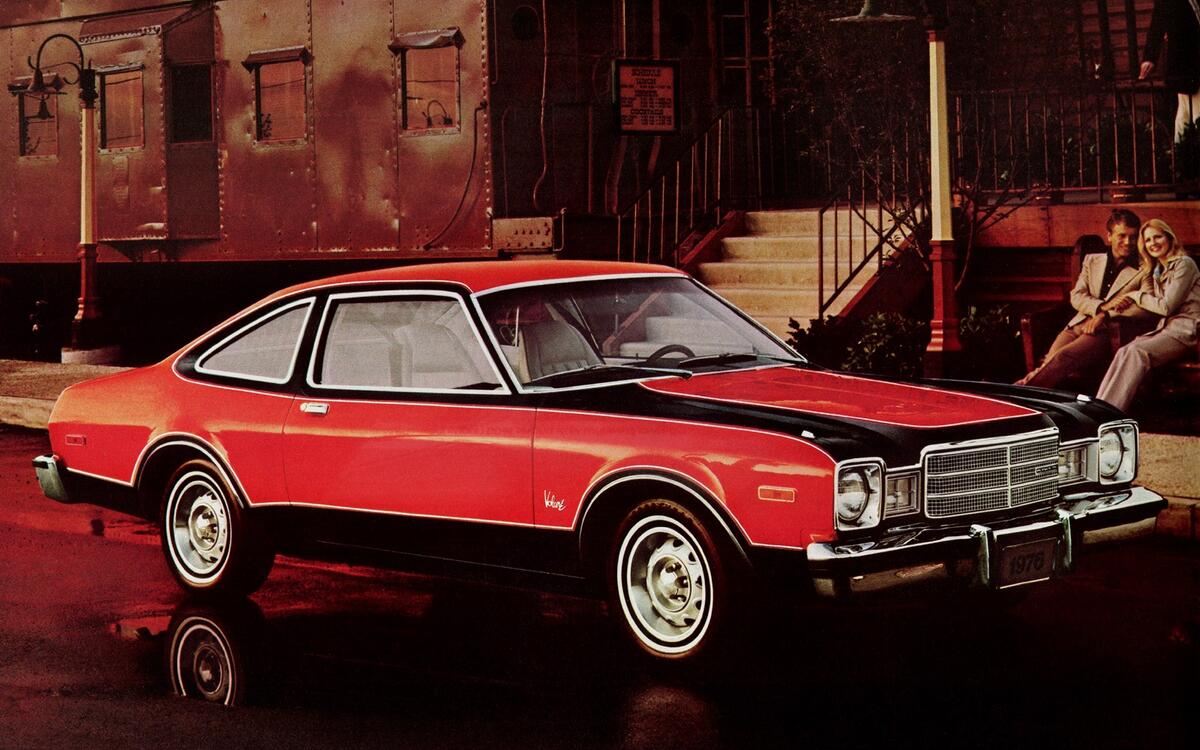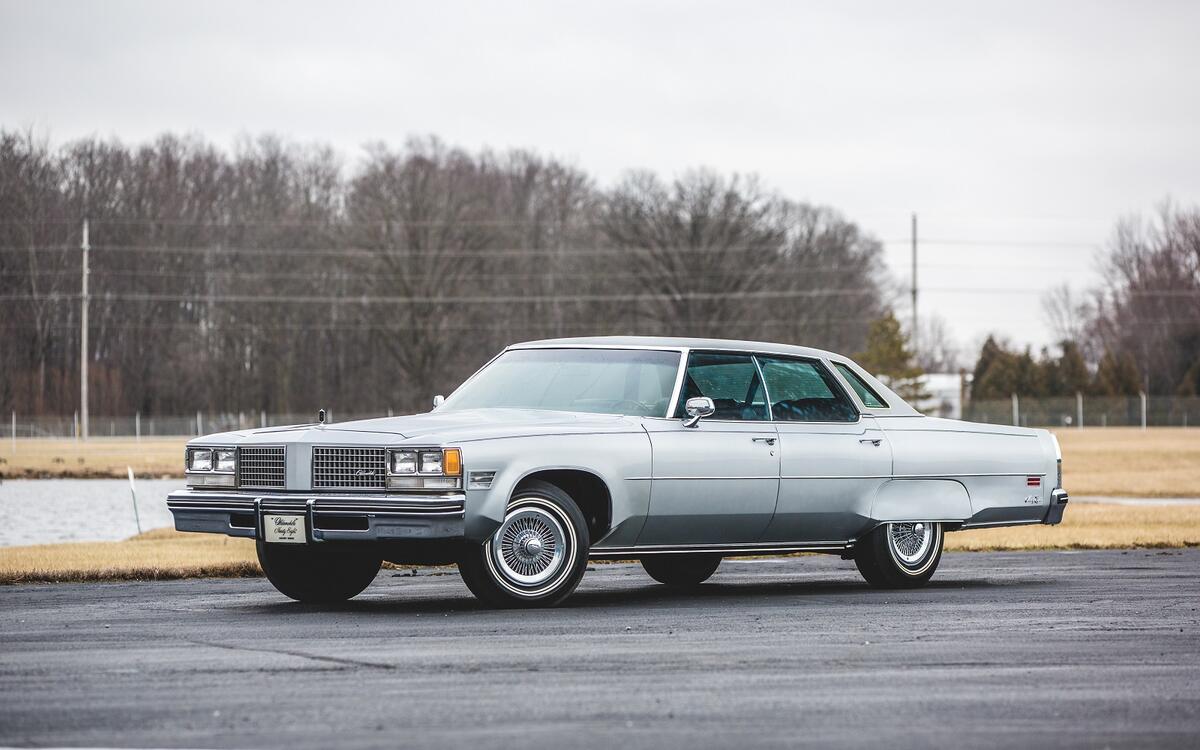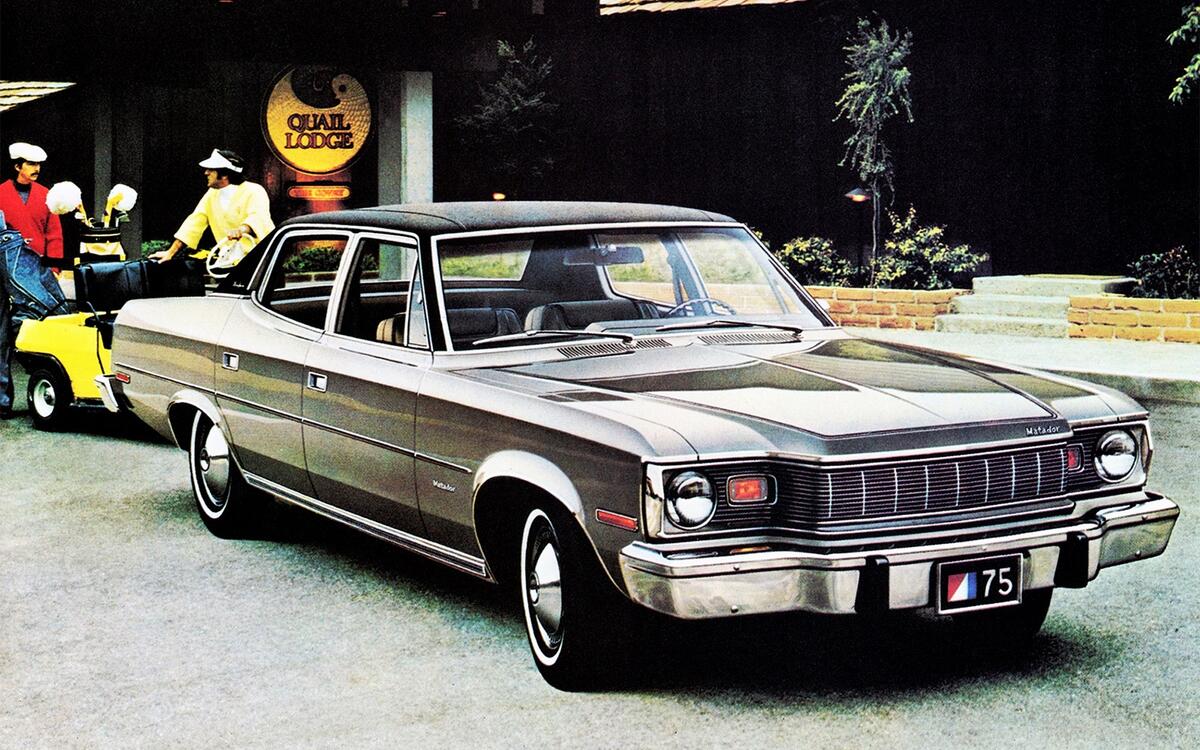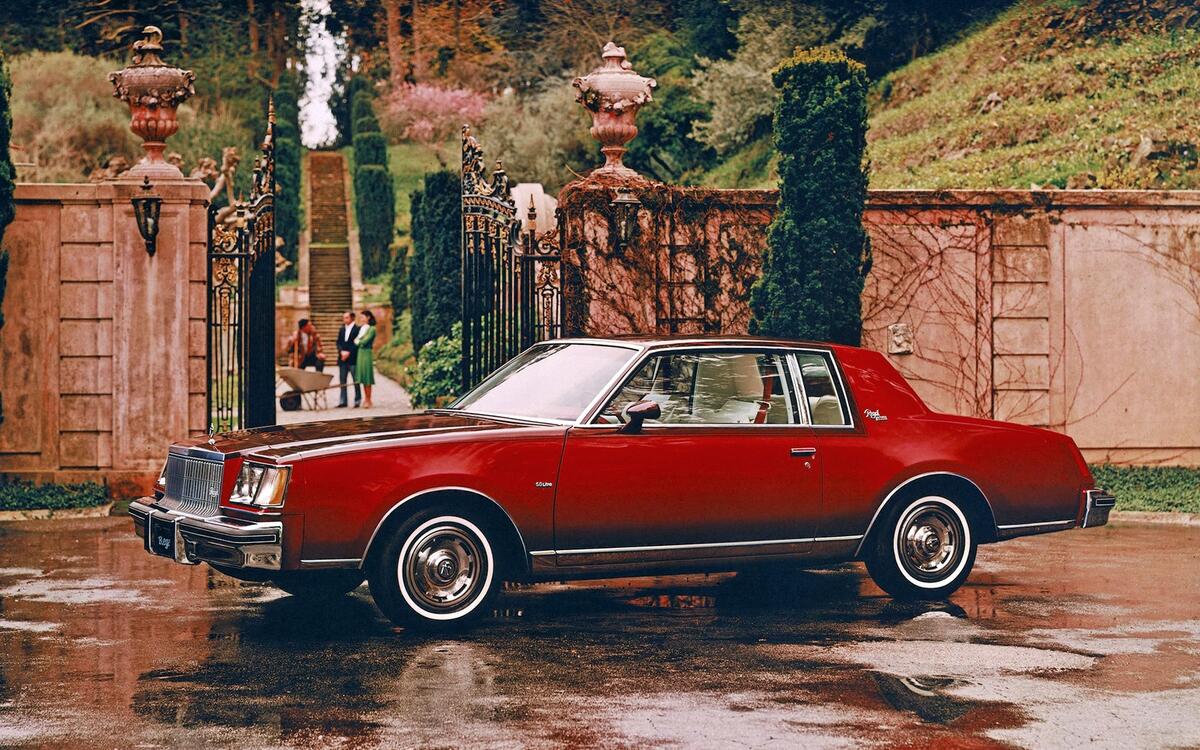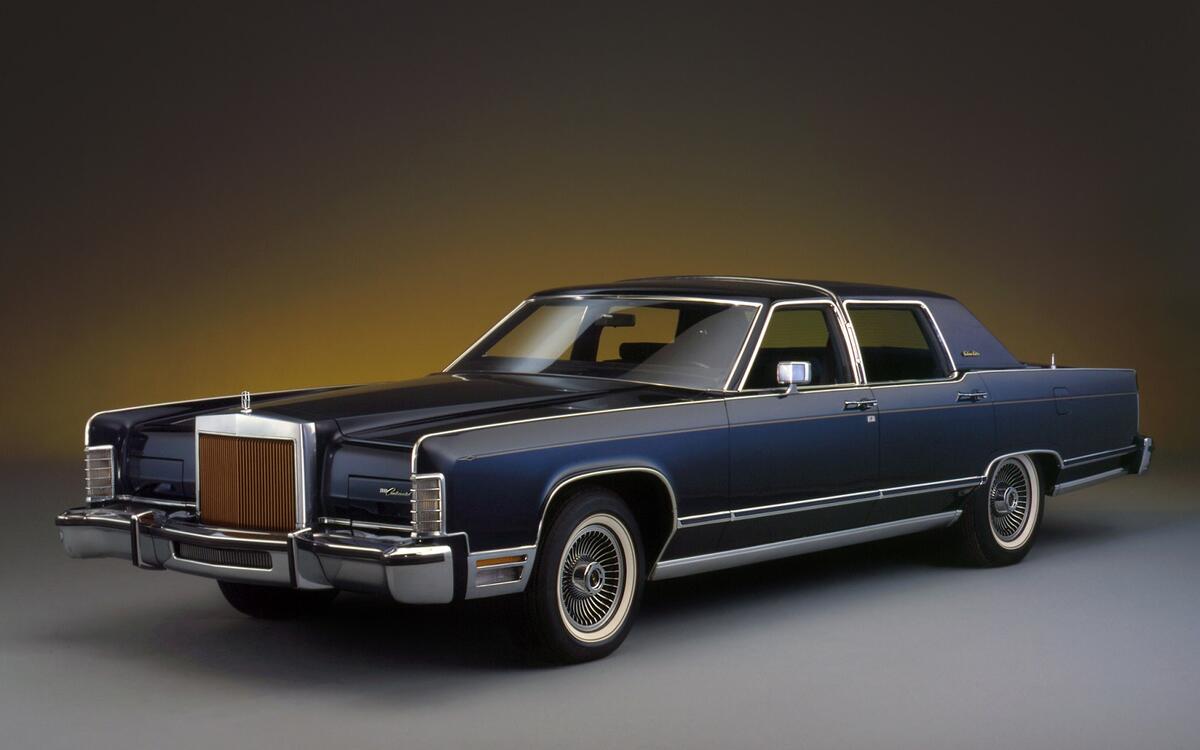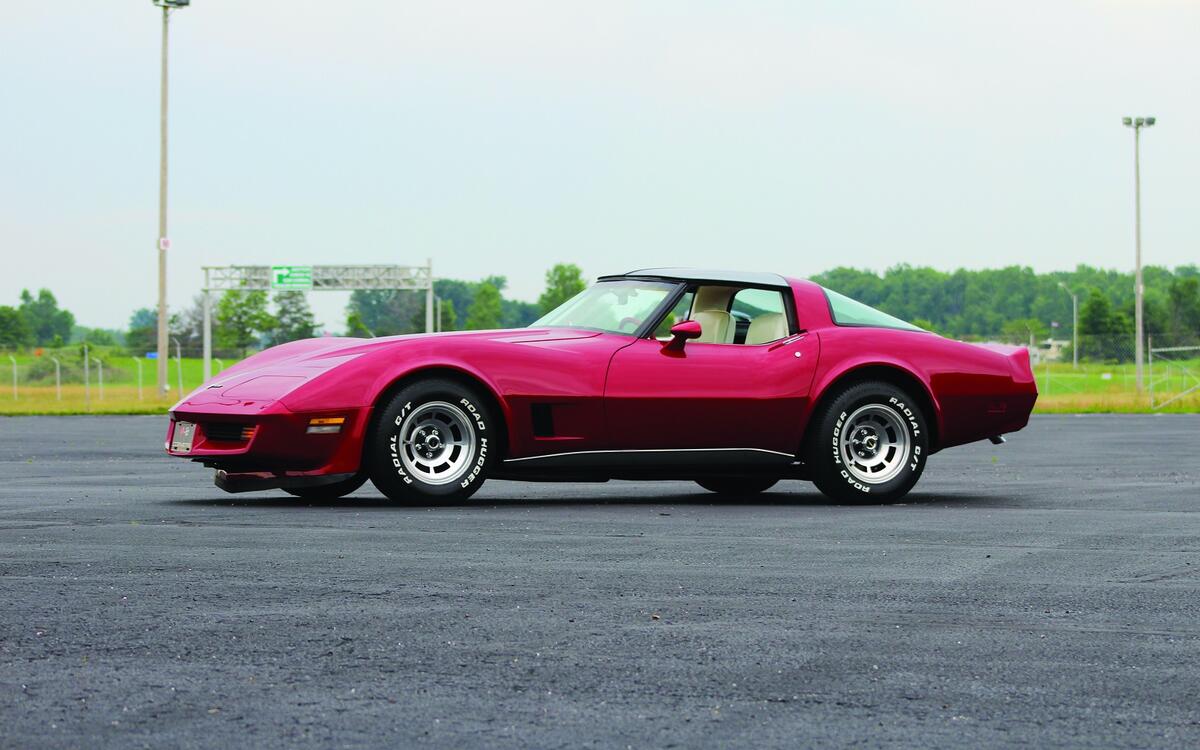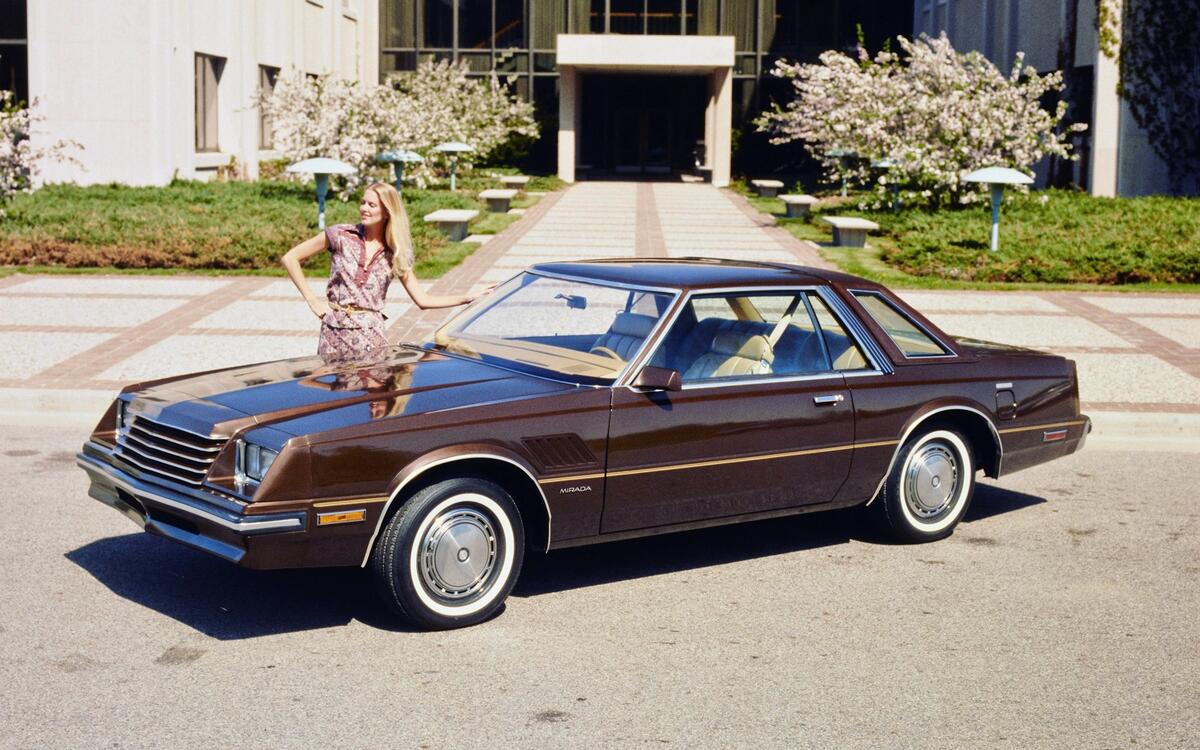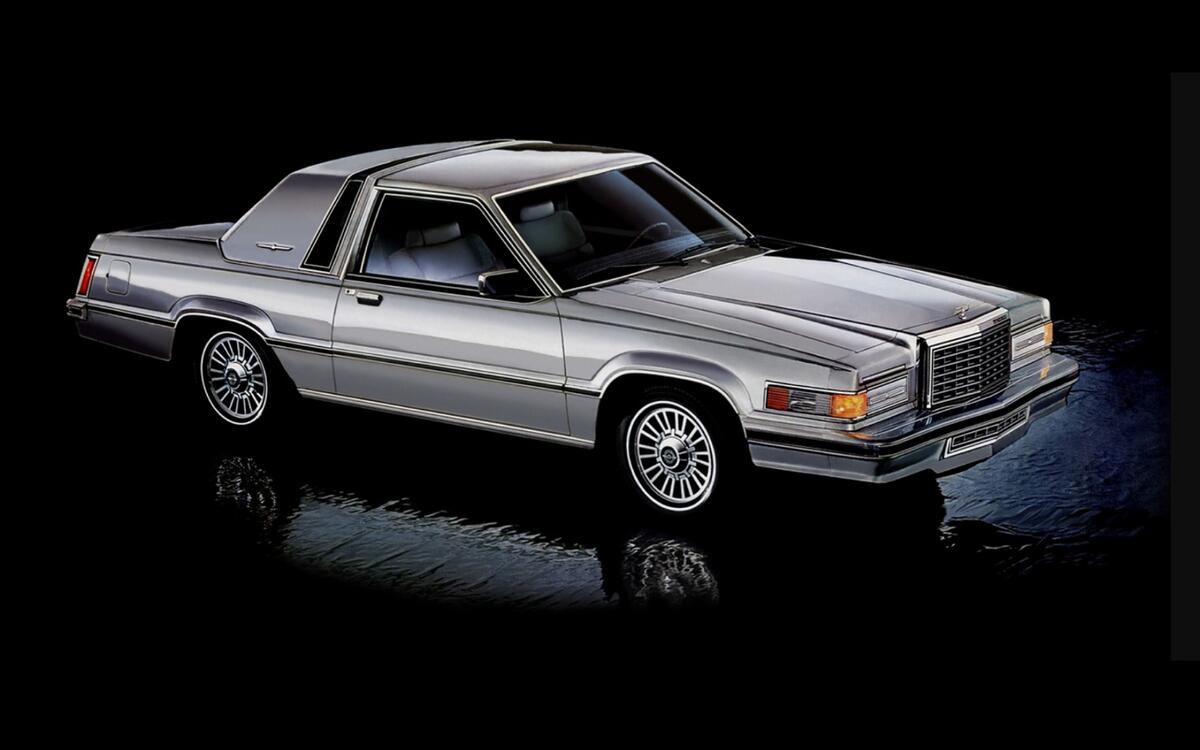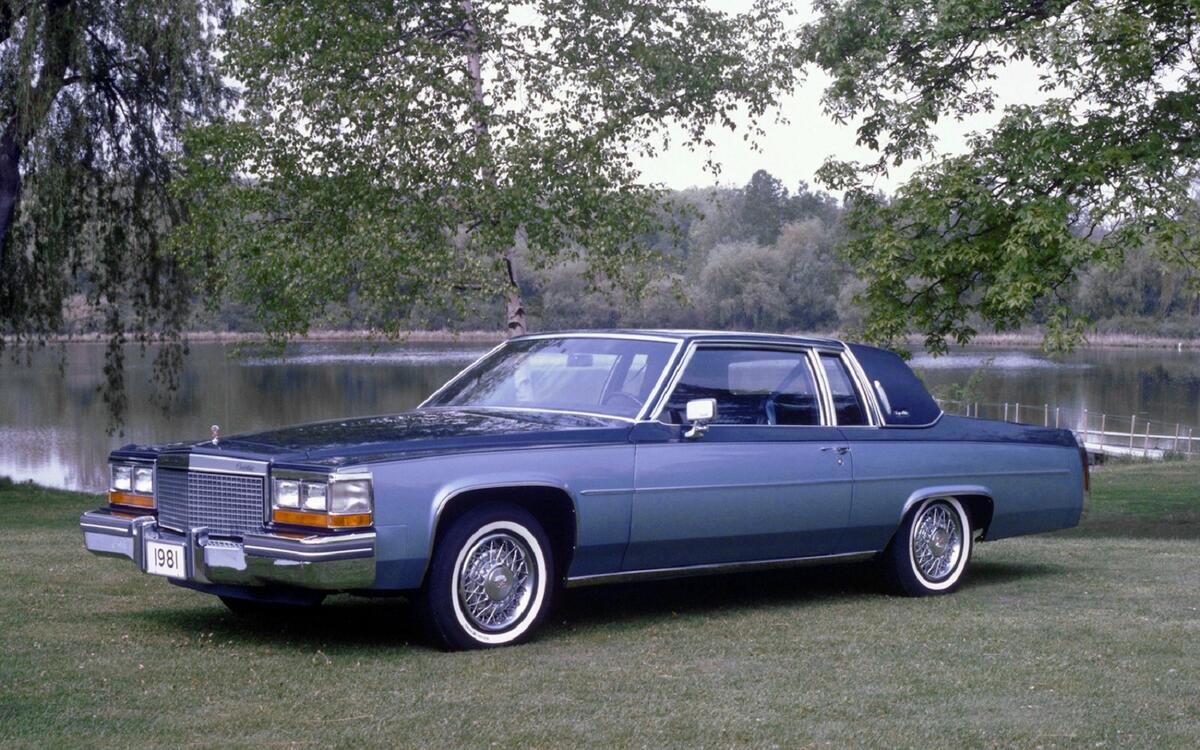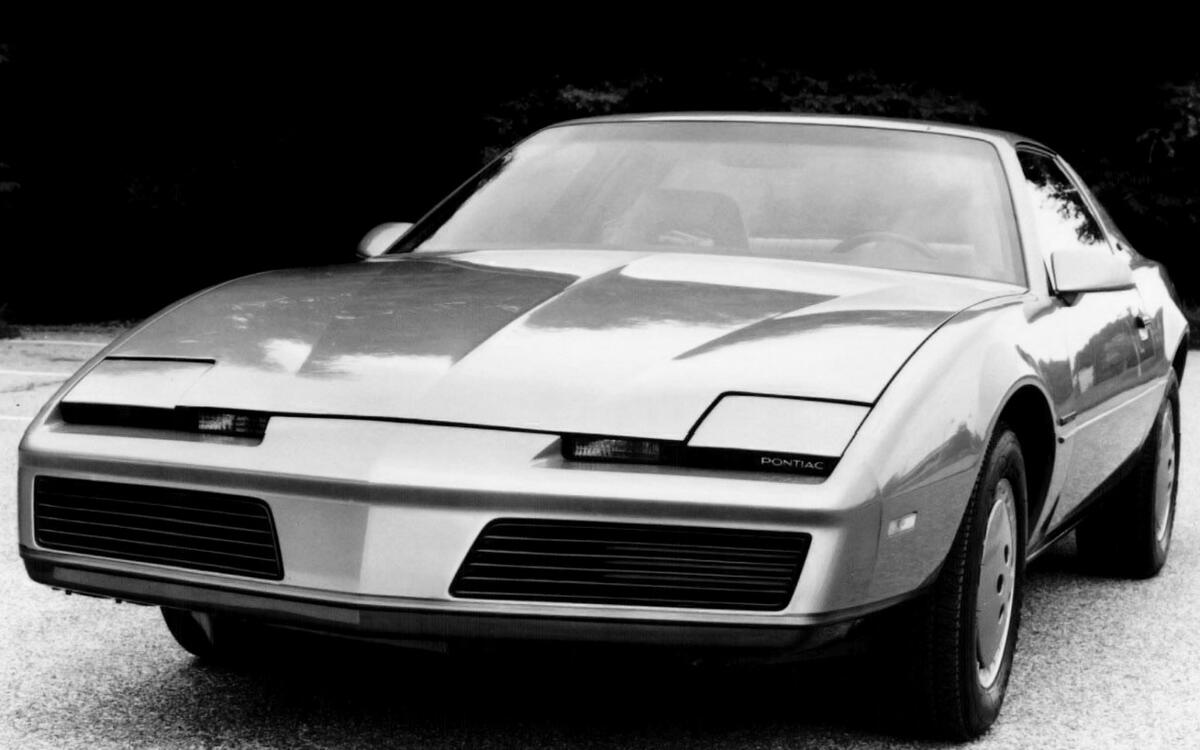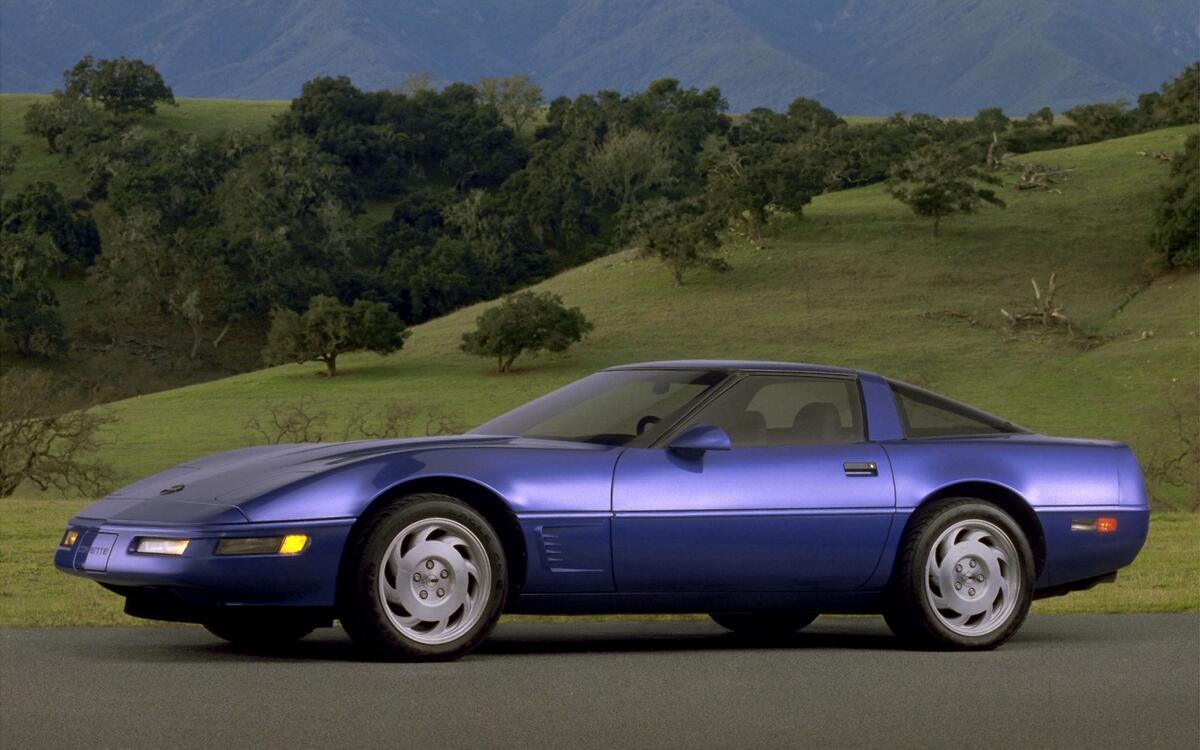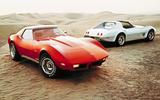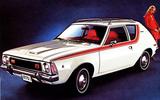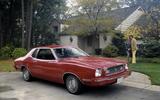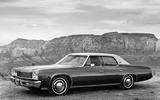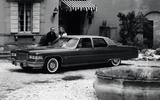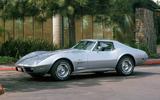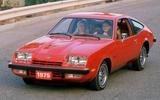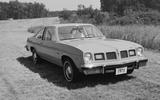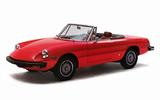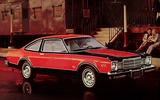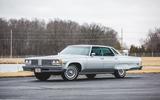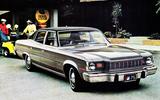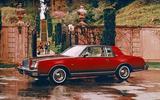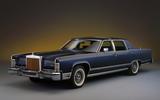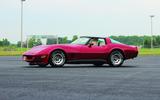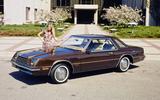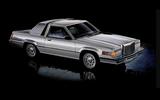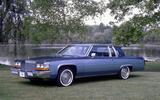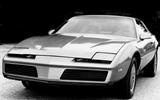 Slide of
Slide of
American regulators began taking air pollution seriously in the 1970s.
The US government created the Environmental Protection Agency (EPA) in 1970 to group its air pollution-related programmes. The EPA’s original mandate is still valid in 2019: It’s tasked with carrying out research, setting emissions regulations and making sure carmakers follow them. In the same year, regulators used data gathered since the Clean Air Act of 1963 to write the Clean Air Act of 1970. Lawmakers suddenly had the power to set and, significantly, enforce emissions regulations which they did starting with the 1975 Corporate Average Fuel Economy (CAFE) mandate.
Carmakers entered the 1970s under more governmental pressure than ever before. Complying with the regulations – while later juggling with the widespread consequences of the 1973 oil crisis – turned the industry on its head and spawned engines that were stunningly anaemic in spite of their mammoth displacement. In this story, we’re taking a look at some of the big-engined cars with paltry outputs.
Please note we’ve singled out the models in this story as examples; the engine referenced was often available in other cars. And, while horsepower ratings embarked on a free-fall, torque remained relatively high:
 Slide of
Slide of
AMC Gremlin (1970)
The AMC Gremlin was only available with a 128bhp, 3.3-litre straight-six engine when it made its debut in 1970. The 1972 model year brought an optional 5.0-litre V8 that put 150bhp under the driver’s right foot. 10,949 of the 94,808 examples of the Gremlin built during the 1972 model year came with a V8.
BHP per litre (rounded): 39 (3.3), 30 (5.0)
 Slide of
Slide of
Ford Mustang II (1974)
Ford presented the radically-downsized Mustang II as the right car at the right time. Introduced for the 1974 model year, it came standard with a 2.3-litre four-cylinder that made 84bhp. Two upgrades were initially available: a 2.8-litre V6 with 103bhp or, in the Mach 1 model, 105bhp. By popular demand, the Mustang II gained an optional, 4.9-litre V8 with 140bhp for the 1975 model year.
BHP per litre: 36 (2.3), 37 and 38 (2.8s), 29 (4.9)
 Slide of
Slide of
Plymouth Fury (1974)
Plymouth stuffed a 5.9-litre, 168bhp V8 in the Fury it redesigned for the 1974 model year. Adding $156 (about £600 in 2019) to the window sticker brought a 7.2-litre eight with 227bhp, which was better suited to a car that weighed about 1909kg regardless of whether it had two or four doors.
BHP per litre: 28 (5.9), 31 (7.2)
 Slide of
Slide of
Cadillac Fleetwood (1975)
Cadillac rolled out an 8.2-litre V8 across most of its range for the 1975 model year. It was fed by a four-barrel carburettor and it made 187bhp, down from 210 when fitted to the Eldorado the previous year. The Seville added to the range that same year had a better power-to-displacement ratio; its 5.7-litre, Oldsmobile-sourced V8 delivered 177bhp thanks to electronic fuel injection.
BHP per litre: 23 (8.2), 31 (5.7)
 Slide of
Slide of
Chevrolet Corvette (1975)
The Chevrolet Corvette flawlessly illustrates the effect emissions regulations and the oil crisis had on American cars. Cars made for the 1974 model year came standard with a 5.7-litre V8 that churned out 250bhp. The following year, Chevrolet lowered the compression ratio and added a catalytic converter to end up with 165bhp from the same small-block V8. That figure rose to 180 the following year.
BHP per litre: 44 (1974), 29 (1975), 31 (1976)
 Slide of
Slide of
Chevrolet Monza (1975)
Chevrolet penned the Monza with an eye on European design trends and it gave it an Italian name but its sheet metal hid unabashedly American engines. Based on the Vega, it came standard with a 77bhp, 2.3-litre four-cylinder engine and could optionally receive a 4.3-litre V8 that made 108bhp. Alternatively, cars sold in California were eligible to receive a 153bhp, 5.7-litre V8.
Chevrolet made 66,615 examples of the Monza during the 1975 model year, including 24,957 units powered by a V8. The bigger, California-spec eight cost $296 in 1975 (about £1100 in 2019 money).
BHP per litre: 33 (2.3), 25 (4.3), 27 (5.7)
 Slide of
Slide of
Mercury Marquis (1975)
The long, stately Mercury Marquis was available with a 156bhp, 7.5-litre V8 for the 1975 model year. It sipped fuel through a two-barrel carburettor. The more upmarket Marquis Brougham and the Grand Marquis (pictured), Mercury’s flagship model, received a variant of the eight topped by a four-barrel carburettor and rated at 215bhp, though the power hike came at the obvious expense of fuel economy.
BHP per litre: 20 (two-barrel 7.5), 27 (four-barrel 7.5)
 Slide of
Slide of
Pontiac Ventura (1975)
For the 1975 model year, the Pontiac Ventura came standard with a Chevrolet-sourced, 4.1-litre six-cylinder engine tuned to deliver 103bhp. V8-powered models got a 4.3-litre borrowed from Oldsmobile and rated at 108bhp. The list of options included a pair of 5.7 V8s with 163 and 173bhp, respectively.
The Ventura stood out because it was available with coupe and a large hatch; it was almost like a modern-day Audi A7 Sportback with two doors. The body style wasn’t as popular as Pontiac hoped.
BHP per litre: 25 (4.1), 25 (4.3), 28 (5.7), 30 (5.7)
 Slide of
Slide of
Alfa Romeo Spider (1976)
European manufacturers struggled with emissions, too, especially when California made its standards tighter than the rest of the nation’s. In the 1970s, Alfa Romeo fitted its cars with an array of smog gear including a hot air intake from the exhaust, an air pump and a catalytic converter.
This equipment robbed the engine of precious horsepower. The Spider’s 2.0-litre four-cylinder made 129bhp during the 1973 model year but that figure dropped to 110 in 1976 and hovered around that level (Alfa quoted 109.5, 111 and 115bhpin different years) until it rose to 120 for the 1990 model year.
BHP per litre: 64 (1973), 55 (1976)
 Slide of
Slide of
Plymouth Volare (1976)
Plymouth released the Volare for the 1976 model year as a replacement for the Valiant. The 3.7-litre slant six came standard with 100bhp but the list of options included 5.2- and 5.9-litre V8s that provided 150 and 170bhp, respectively.
The smaller eight was part of the Road Runner package priced at $205 (approximately £700 in 2019) that borrowed its name from an emblematic muscle car launched for the 1968 model year with up to 425bhp from a mighty 7.0-litre Hemi V8. The Road Runner’s metamorphosis illustrated how the definition of performance evolved.
BHP per litre: 27 (3.7), 29 (5.2), 29 (5.9), 61 (7.0)
 Slide of
Slide of
Oldsmobile Ninety-Eight (1976)
Oldsmobile retired its venerable 7.5-litre V8 after the 1976 model year. It mustered 190bhp when fitted to the Ninety-Eight and 215bhp when dropped in the Toronado. In both cases it had a boat anchor-like effect on the company’s average fuel economy.
For 1977, the Ninety-Eight sensibly downsized to a 5.7-litre eight for 1977 but a 6.6-litre unit with 185bhp on tap was offered at an extra cost. Its output fell to 175bhp in 1979, the year the second oil crisis sent shockwaves across America.
BHP per litre: 25 (7.5, Ninety-Eight), 27 (7.5, Toronado), 28 (6.6, 1977), 26 (6.6, 1979)
 Slide of
Slide of
AMC Matador (1978)
The AMC Matador ended its career four years after it received a thorough redesign for the 1974 model year. Coupe and saloon models entered the 1978 model year with a 4.2-litre straight-six engine that made 120bhp, up from 98 earlier in the model’s production run, and could be upgraded with a 5.9-litre, 140bhp V8 at an extra cost. AMC charged buyers $190 (about £572 in 2019) for the V8 in 1978.
Designed to haul and tow, the Matador Estate came standard with eight cylinders.
BHP per litre: 28 (4.2), 24 (5.9)
 Slide of
Slide of
Buick Regal (1979)
In California and high-altitude counties across the United States, motorists in the market for Buick’s Century or Regal (coupe model pictured) could select an optional, 5.0-litre V8 that generated just 115bhp. California-spec cars also received an electronically-controlled carburettor and a three-way catalytic converter.
It was a small upgrade over the 3.2-litre, 105bhp V6 that came standard elsewhere in America but 49-state cars were eligible to receive a 4.9-litre V8 with up to 150bhp.
BHP per litre: 33 (3.2), 31 (4.9), 23 (5.0)
 Slide of
Slide of
Lincoln Continental (1979)
For the 1979 model year, the V8 that powered the Lincoln Continental shrunk from 7.5 to 6.6 litres and its output dropped from 210 to 159bhp. It also swapped its four-barrel carburettor for a more efficient two-barrel unit. The Mark V, Lincoln’s flagship model, received the same changes.
BHP per litre: 28 (1978), 24 (1979)
 Slide of
Slide of
Chevrolet Corvette (1980)
The Chevrolet Corvette lost its bite during the 1980 model year. Faced with the dauntingly expensive prospect of getting the 5.7-litre V8 certified in California, product planners threw in the towel and stuffed a 180bhp, 5.0-litre V8 in cars headed for the Golden State. The four-speed manual offered in the other 49 states wasn’t available, either, so buyers settled for a lackadaisical three-speed automatic. The end result was one of least convincing sports cars ever to wear the Corvette nameplate.
Elsewhere in America, the standard engine delivered 190bhp, which wasn’t much better, but enthusiasts could select a more powerful variant rated at 230bhp thanks to a higher compression ratio. Chevrolet charged $595 (about £1400) for the extra power while it compensated motorists in California with a $50 (roughly £120 in 2019) credit, though they had to pay an extra $250 (around £600 in 2019) for a state-specific emissions system. It’s probably not a coincidence that annual Corvette sales dipped from 53,807 units for the 1979 model year to 40,614 in 1980.
BHP per litre: 36 (5.0), 33 (5.7, regular compression), 40 (5.7, high compression)
 Slide of
Slide of
Dodge Mirada (1980)
Closely related to the Chrysler Cordoba, the Dodge Mirada released for the 1980 model year offered buyers an optional 5.2-litre V8 rated at 120bhp, a noticeable upgrade over the standard, 90bhp 3.7-liter straight-six. The optional CMX package gave motorists with even more cash to spare access to a 5.9-litre V8 that used a four-barrel carburettor to make 185bhp.
BHP per litre: 24 (3.7), 23 (5.2), 31 (5.9)
 Slide of
Slide of
Ford Thunderbird (1980)
Downsizing hit the Ford Thunderbird hard. For the 1980 model year, it came standard with a 4.2-litre V8 that panted out 115bhp. The Silver Anniversary edition variant benefitted from a 131bhp evolution of the engine which added much-needed pep to the coupe’s pace.
Thunderbird buyers not interested in the commemorative package could pay extra for the more powerful engine.
BHP per litre: 23 (standard), 26 (optional)
 Slide of
Slide of
Cadillac V-8-6-4 (1981)
Cadillac found a clever solution to counter rising fuel costs and tightening emissions regulations. It teamed up with the Eaton Corporation to develop a 6.0-litre, 140bhp V8 with cylinder deactivation technology that transformed it into a 4.5-litre V6 or a 3.0-litre V4 when full power wasn’t needed. Microprocessor technology decided which cylinders could be shut off and sent a signal to a solenoid that closed the intake and exhaust valves.
The engine fired on all eights as soon as the driver stepped on the accelerator. The system worked well on paper and it became standard across the entire Cadillac range for the 1981 model year with the exception of the Seville, which shipped with a 105bhp diesel V8.
Problems quickly arose and General Motors couldn’t fix them fast enough. Ultimately, dealers ended up disabling the system altogether. Cadillac dropped the V-8-6-4 engine after the 1981 model year and replaced it with a seriously downsized, 4.1-litre V8 that made 125bhp.
BHP per litre: 23 (6.0), 30 (4.1)
 Slide of
Slide of
Pontiac Firebird (1982)
For the 1982 model year, the Pontiac Firebird’s most powerful engine was a 5.0-litre V8 tuned to deliver 145bhp. That’s not much, and the Firebird certainly wasn’t as quick as it looked, but any upgrade was better than the 90bhp, 2.5-litre Iron Duke four-cylinder that came standard. Enthusiasts who wanted to split the difference between the two could get a 112bhp, 2.8-litre V6.
Alternatively, the Firebird Trans Am was offered with a fuel-injected variant of the 5.0-litre whose output rose to 165bhp.
BHP per litre: 36 (2.5), 40 (2.8), 29 (carburetted 5.0), 33 (fuel-injected 5.0)
 Slide of
Slide of
The Malaise Era’s epilogue
Historians commonly lump cars with big engines and small horsepower outputs under the Malaise Era umbrella. Precisely when it started and ended is open to interpretation but what’s certain is that horsepower rose again during the 1990s. In 1995, the Chevrolet Corvette (pictured) offered a 5.7-litre V8 with 300bhp as its entry-level engine while the ZR-1 model benefited from a 405bhp eight.
Emissions regulations certainly didn’t become more lenient. Technology instead stepped in to save the day. Engine management software and fuel injection became increasingly precise so engineers were able to achieve big horsepower numbers while remaining well under the legal emissions limit.
BHP per litre: 53 (standard), 71 (ZR-1)
American carmakers struggled to meet emissions regulations in the 1970s
Advertisement


